From NASA Site

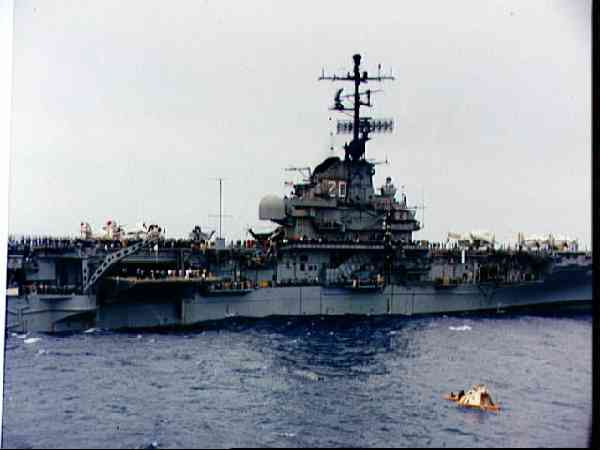
NASA Photo ID: S67-49861
File Name: 10074818.jpg
Film Type: 70mm BW
Date Taken: 11/09/67
Title: U.S.S. Bennington during recovery operations for Apollo 4
Description:
U.S.S. Bennington comes alongside the floating Apollo spacecraft 017 Command Module during recovery operations in the mid-Pacific Ocean. The Command Module splashed down at 3:37 p.m., November 9, 1967, 934 nautical miles northwest of Honolulu, Hawaii.
Saved from:
http://www.hq.nasa.gov/office/pao/History/Apollo204/chariot.html
12/3/2002
Apollo 4 and Saturn V
Birds, reptiles, and animals of higher and lower order that gathered at the Florida Wildlife Game Refuge (also known by the aliases of Merritt Island Launch Annex and Kennedy Space Center) at 7:00 in the morning of 9 November 1967 received a tremendous jolt. When the five engines in the first stage of the Saturn V ignited, there was a man-made earthquake and shockwave. As someone later remarked, the question was not whether the Saturn V had risen, but whether Florida had sunk.
Apollo-Saturn mission 501, now officially Apollo 4--the first all-up test of the three--stage Saturn V--was on its way. On its top rested spacecraft 017, a Block I model with many Block II features, such as an improved heatshield and a new hatch. The aim, of the mission, in addition to testing the structural integrity and compatibility of the spacecraft--launch vehicle combination, was to boost the command and service modules into an elliptical orbit and then power-drive the command module (in, an area over Hawaii) into the atmosphere as though it were returning from the moon to the earth. Apollo 4 also carrier a mockup of the lunar module. Weighing more than 2.7 million kilograms when fully fueled with Liquid oxygen and a kerosene mixture called RP-1, the Saturn, V first stage generated 7.5 million pounds of thrust at liftoff.
The flight went almost exactly as planned, and the huge booster rammed its payload into a parking orbit 185 kilometers above the earth. After two revolutions, the S-IVB third stage propelled the spacecraft outward to more than 17,000 kilometers, where it cut loose from the S-IVB and started falling earthward. Then the service module fired, to send the spacecraft out to 18,000 kilometers for a four-and-a-half hour soak in the supercold and hot radiation of space. Telemetry signals noted no degradation in cabin environment. with the spacecraft nose pointed toward the earth, the service module engine fired again. When the spacecraft reached the 122,000-meter atmospheric reentry zone, it was blunt-end forward and traveling at a speed of 40,000 kilometers per hour. Seamen on the U.S.S. Bennington, the prime recovery ship in the Pacific, watched the descending spacecraft, with its parachutes in full bloom, until it landed 16 kilometers away about nine hours after its launch from Florida. Swimmers jumped from helicopters to assist in the recovery of spacecraft 017, which took about two hours. Technically, managerially, and psychologically, Apollo 4 was an important and successful mission, especially in view of the number of firsts it tackled. It was the first flight of the first and second stages of the Saturn V (the S-IVB stage had flown on the Saturn IB launch vehicles), the first launch of the complete Saturn V, the first restart of the S-IVB in orbital flight, the first liftoff from Complex 39, the first flight test of the Block II command module heatshield, the first flight of even a simulated lunar module, and so on. The fact that everything worked so well and with so little trouble gave NASA a confident feeling, as Phillips phrased it, that "Apollo (was] on the way to the moon.
Even before spacecraft 017 had set out on its trip, the Manned Spacecraft Center was working hard on how to get Apollo to the moon before 197O--only a little more than two years away. On 20 September, Low and others met with top manned space flight officials in Washington to present the center's plan, the key features of which were the need for additional lander and Saturn V V development flights and the incorporation of a lunar orbital flight into the schedule. Owen Maynard presented plans for scheduling seven types of missions that would lead step by step to the ultimate goal. He described these steps, "A" through "G," with G as the lunar landing mission. Phillips asked that the group consider carefully both the pros and cons of flying an additional Saturn V flight. Wernher von Braun and Low favored the flight--von Braun, because he felt the launch operations people would need the experience, and Low, because he believed that data from several flights would be needed to make certain that the big booster was indeed ready for its flight to the moon. Against these opinions, Phillips cited the tremendous workload an added flight would place on the preflight crews at Kennedy, and Mueller reminded the meeting of the already crowded launch - schedule for 1968. An additional lunar module mission would be flown only if LM-1 were unsuccessful.
Most discussion centered on the insertion of a lunar orbital flight into the schedule. Houston wanted "to evaluate the deep space environment and to develop procedures for the entire lunar landing mission short of LM descent, ascent and surface operations." Mueller remarked that he regarded the lunar orbit mission as just as hazardous as the landing mission. But the Texas group argued that they had no intention of flying the vehicle closer to the moon than 15 000 meters. They pointed out that the crew would not have to train for the actual landing, but it would give them a chance to develop the procedures for getting into lunar orbit and undocking and for the rendezvous that the lunar landing crew would need. Mueller said, "Apollo should not go to the moon to develop procedures." Low reminded him that crew operations would not be the main reason for the trip; there was still a lot to be learned about communications, navigation, and thermal control in the deep space environment. Although a final decision on the lunar orbital mission was not made until later, Maynard's seven-step plan was generally adopted throughout NASA.
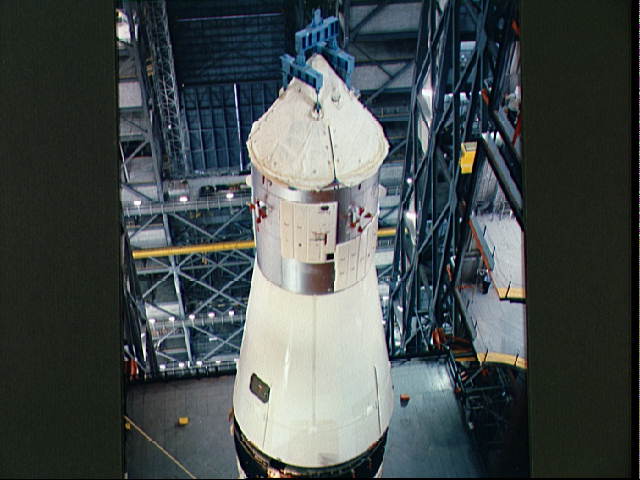 Apollo Spacecraft 017 moved for mating with Saturn V launch vehicle |
NASA Photo ID: S67-36022 File Name: 10074805.jpg Film Type: 4x5 Date Taken: 06/20/67 Title: Apollo Spacecraft 017 moved for mating with Saturn V launch vehicle Description: Apollo Spacecraft 017 is moved into position in the Vehicle Assembly Building's high bay area for mating with the Saturn V launch vehicle. S/C 017 will be flown on the Spacecraft 017/Saturn 501 (Apollo 4) space mission. |
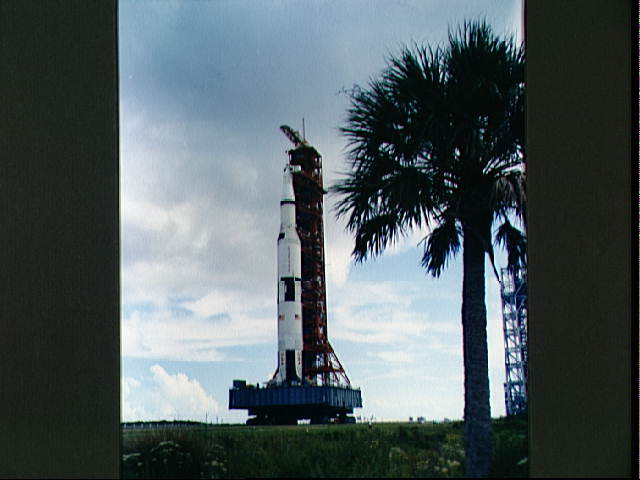 Apollo 4 stack and mobile launch tower moving from VAB toward launch pad |
NASA Photo ID: S67-43595 File Name: 10074806.jpg Film Type: 4x5 Date Taken: 08/26/67 Title: Apollo 4 stack and mobile launch tower moving from VAB toward launch pad Description: The Apollo 4 (Spacecraft 017/Saturn 501) stack and its mobile launch tower atop a crawler-transporter moving from the Vehicle Assembly Building (VAB) toward Pad A, Launch Complex 39. |
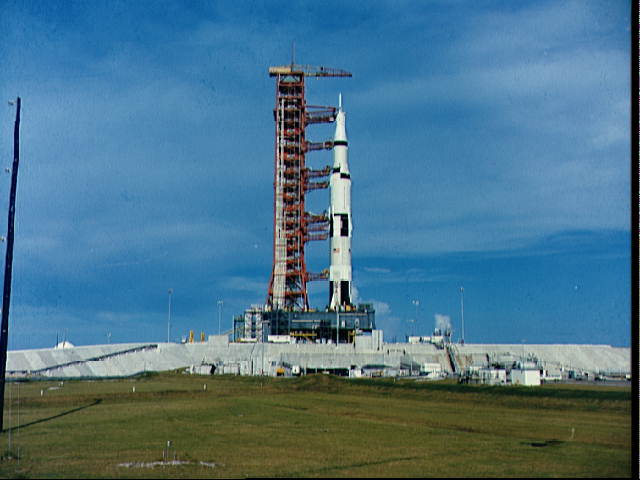 Apollo 4 stack and mobile launch tower atop Pad A at Launch Complex 39 |
NASA Photo ID: S67-43593 File Name: 10074807.jpg Film Type: 4x5 Date Taken: 08/26/67 Title: Apollo 4 stack and mobile launch tower atop Pad A at Launch Complex 39 Description: The Apollo 4 (Spacecraft 017/Saturn 501) stack and its mobile launch tower stand atop Pad A at Launch Complex 39 just prior to launch. |
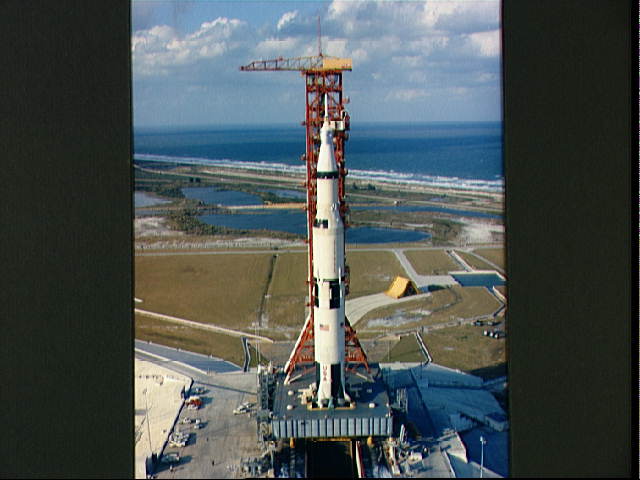 Early morning view of Apollo 4 unmanned spacecraft on launch pad |
NASA Photo ID: S67-50530 File Name: 10074808.jpg Film Type: 4x5 Date Taken: 11/09/67 Title: Early morning view of Apollo 4 unmanned spacecraft on launch pad Description: Early morning view of Pad A, Launch Complex 39, Kennedy Space Center, showing Apollo 4 (Spacecraft 017/Saturn 501) unmanned, earth-orbital space mission ready for launch. |
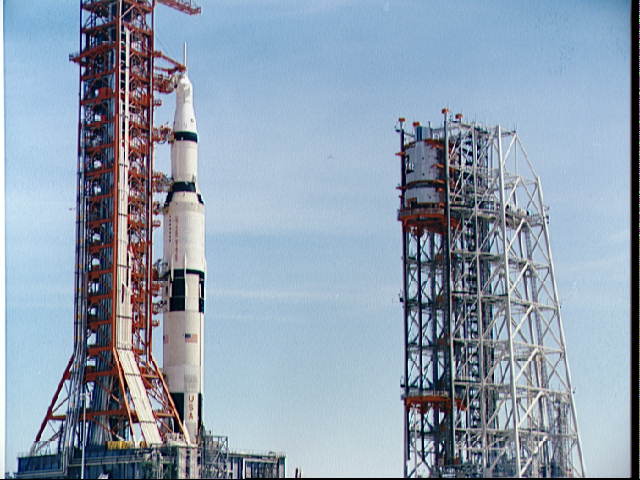 Mobile service structure for Apollo 4 arriving at Pad A, Launch Complex 39 |
NASA Photo ID: S67-43603 File Name: 10074809.jpg Film Type: 4x5 Date Taken: 08/26/67 Title: Mobile service structure for Apollo 4 arriving at Pad A, Launch Complex 39 Description: The mobile service structure for the Apollo 4 (Spacecraft 017/Saturn 501) unmanned space mission arriving at Pad A, Launch Complex 39. |
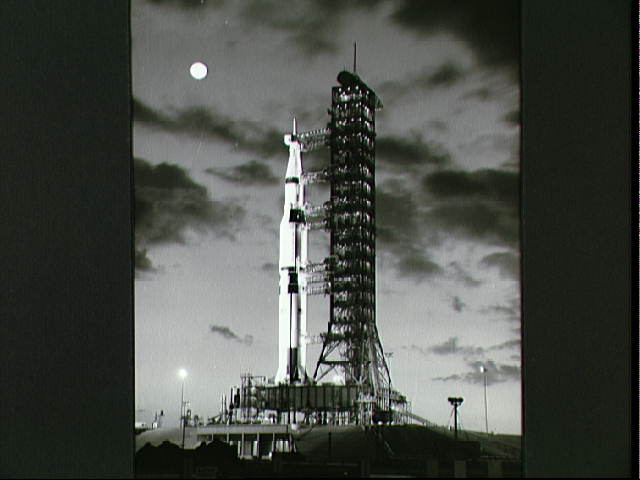 Early morning view of Apollo 4 unmanned spacecraft on launch pad |
NASA Photo ID: S67-50531 File Name: 10074810.jpg Film Type: 4x5 Date Taken: 11/09/67 Title: Early morning view of Apollo 4 unmanned spacecraft on launch pad Description: Early morning view of Pad A, Launch Complex 39, Kennedy Space Center, showing Apollo 4 (Spacecraft 017/Saturn 501) unmanned, earth-orbital space mission ready for launch, with a full moon in the upper left part of the image. The 363-foot tall Apollo/Saturn V space vehicle was launched at 7:00:01 AM (EST), November 9, 1967. |
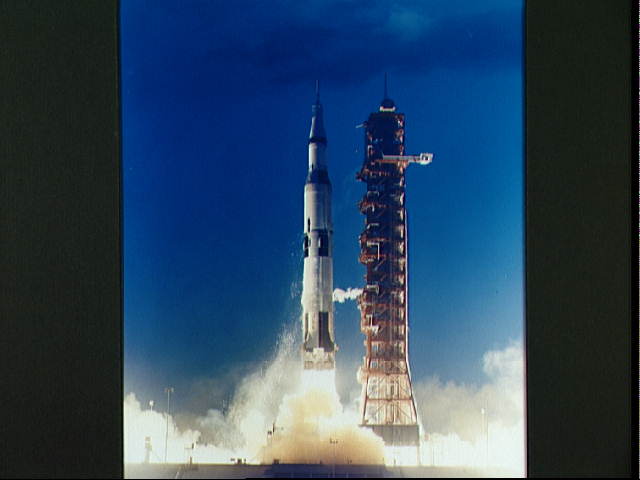 Apollo 4 unmanned mission launched from Pad A, Launch Complex 39 |
NASA Photo ID: S67-49969 File Name: 10074811.jpg Film Type: 4x5 Date Taken: 11/09/67 Title: Apollo 4 unmanned mission launched from Pad A, Launch Complex 39 Description: Apollo 4 (Spacecraft 017/Saturn 501) unmanned space mission was launched from Pad A, Launch Complex 39, Kennedy Space Center, Florida. The liftoff was at 7:00:01 a.m., November 9, 1967. |
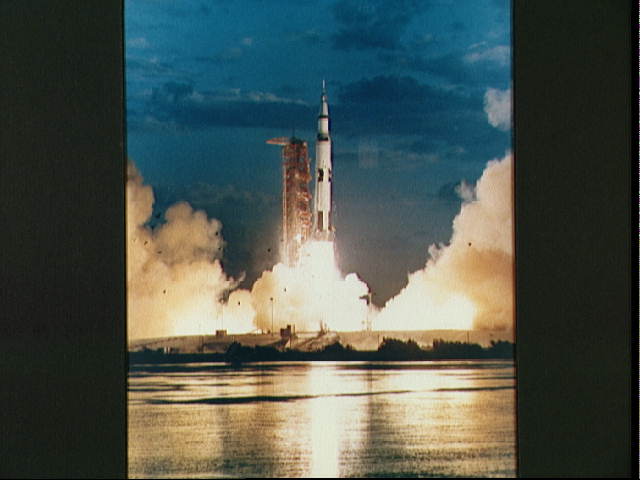 Launching of the Apollo 4 unmanned space mission |
NASA Photo ID: S67-50433 File Name: 10074812.jpg Film Type: 35mm Date Taken: 11/09/67 Title: Launching of the Apollo 4 unmanned space mission Description: The Apollo 4 (Spacecraft 017/Saturn 501) unmanned space mission was launched from Pad A, Launch Complex 39, Kennedy Space Center, Florida. The liftoff was at 7:00:01 a.m., November 9, 1967. |
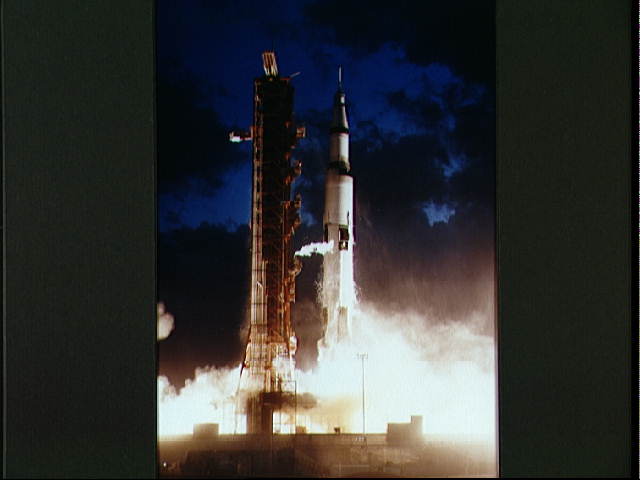 Apollo 4 unmanned mission launched from Pad A, Launch Complex 39 |
NASA Photo ID: S67-50903 File Name: 10074813.jpg Film Type: 70mm Date Taken: 11/09/67 Title: Apollo 4 unmanned mission launched from Pad A, Launch Complex 39 Description: Apollo 4 (Spacecraft 017/Saturn 501) unmanned space mission was launched from Pad A, Launch Complex 39, Kennedy Space Center, Florida. The liftoff was at 7:00:01 a.m., November 9, 1967. |
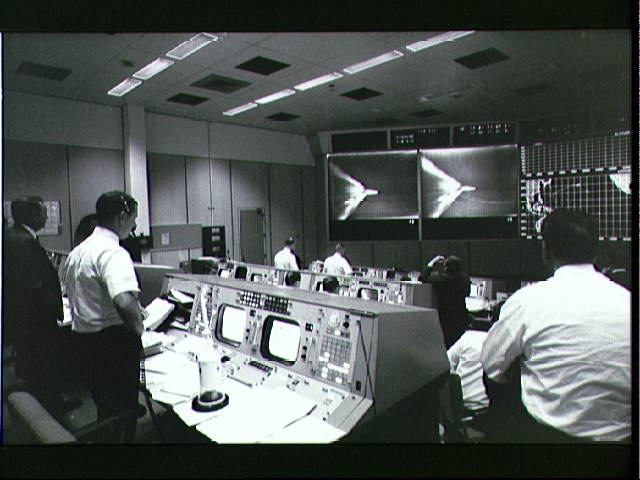 Activity in the Mission Control Room during launch of Apollo 4 |
NASA Photo ID: S67-50312 File Name: 10074814.jpg Film Type: 35mm BW Date Taken: 11/09/67 Title: Activity in the Mission Control Room during launch of Apollo 4 Description: Overall view of activity in the Mission Operations Control Room in the Mission Control Center at the Manned Spacecraft Center during the launch of the unmanned earth-orbital Apollo 4 space mission. The flight controllers are watching the Saturn V staging on the televison monitor. Apollo 4 was the first launch of the Saturn V space vehicle. |
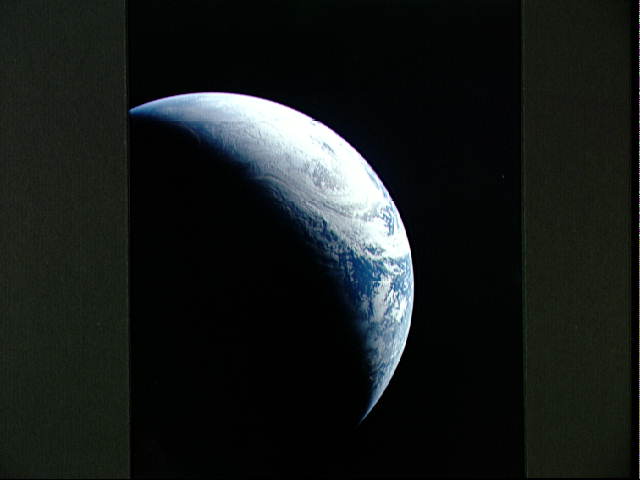 Brazil, Atlantic Ocean, Africa, Sahara & Antarctica seen from Apollo 4 |
NASA Photo ID: AS04-01-410 File Name: 10074815.jpg Film Type: 70mm Date Taken: 11/09/67 Title: Brazil, Atlantic Ocean, Africa, Sahara & Antarctica seen from Apollo 4 Description: Coastal Brazil, Atlantic Ocean, West Africa, Sahara and Antarctica, looking west, as seen from the earth-orbital Apollo 4 (Spacecraft 017/Saturn 501) unmanned space mission. This picture was taken when the Spacecraft 017 and the Saturn S-IVB (third) stage was orbiting the earth at an altitude of 9,745 nautical miles. |
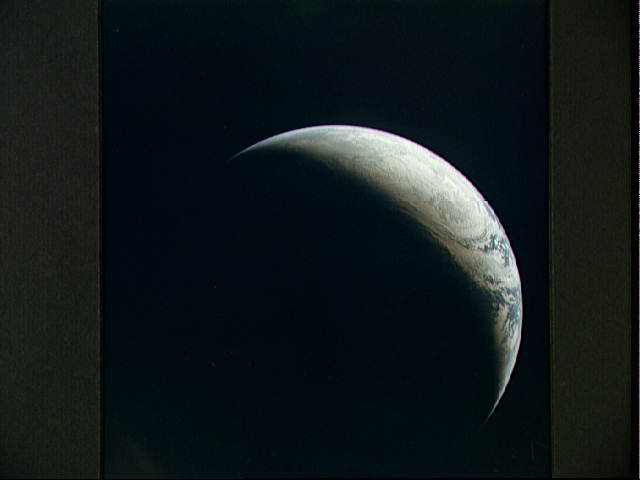 Brazil, Atlantic Ocean, Africa & Antarctica seen from Apollo 4 |
NASA Photo ID: AS04-01-580 File Name: 10074816.jpg Film Type: 70mm Date Taken: 11/09/67 Title: Brazil, Atlantic Ocean, Africa & Antarctica seen from Apollo 4 Description: Coastal Brazil, Atlantic Ocean, West Africa, and Antarctica, looking west, as seen from the earth-orbital Apollo 4 (Spacecraft 017/Saturn 501) unmanned space mission. This picture was taken when the Spacecraft 017 and the Saturn S-IVB (third) stage was orbiting the earth at an altitude of 9,544 nautical miles. |
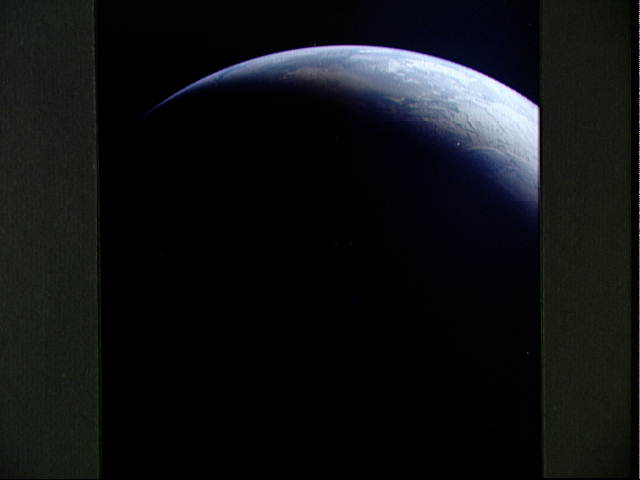 Atlantic Ocean, Antarctica as seen from the Apollo 4 unmanned spacecraft |
NASA Photo ID: AS04-01-750 File Name: 10074817.jpg Film Type: 70mm Date Taken: 11/09/67 Title: Atlantic Ocean, Antarctica as seen from the Apollo 4 unmanned spacecraft Description: Atlantic Ocean, Antarctica, looking west, as seen from the earth-orbital Apollo 4 (Spacecraft 017/Saturn 501) unmanned space mission. This picture was taken when the Spacecraft 017 and the Saturn S-IVB (third) stage was orbiting the earth at an altitude of 8,628 nautical miles. |
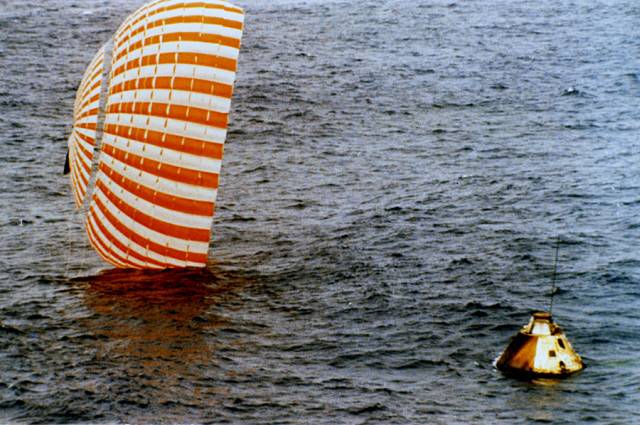 Apollo 4 Command Module in Pacific Ocean following splashdown |
NASA Photo ID: ap4-67-HC-746 File Name: 10074817a.jpg Film Type: 35mm Date Taken: 11/09/67 Title: Apollo 4 Command Module in Pacific Ocean following splashdown Description: U.S.S. Bennington comes alongside the floating Apollo spacecraft 017 Command Module during recovery operations in the mid-Pacific Ocean. The Command Module splashed down at 3:37 p.m., November 9, 1967, 934 nautical miles northwest of Honolulu, Hawaii. |
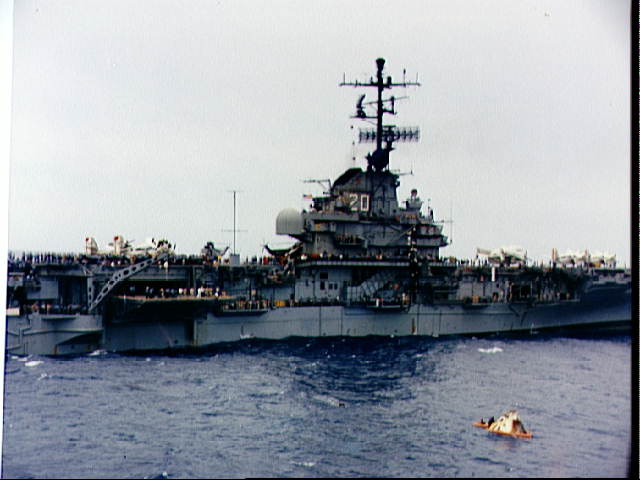 U.S.S. Bennington during recovery operations for Apollo 4 |
NASA Photo ID: S67-49861 File Name: 10074818.jpg Film Type: 70mm BW Date Taken: 11/09/67 Title: U.S.S. Bennington during recovery operations for Apollo 4 Description: U.S.S. Bennington comes alongside the floating Apollo spacecraft 017 Command Module during recovery operations in the mid-Pacific Ocean. The Command Module splashed down at 3:37 p.m., November 9, 1967, 934 nautical miles northwest of Honolulu, Hawaii. |
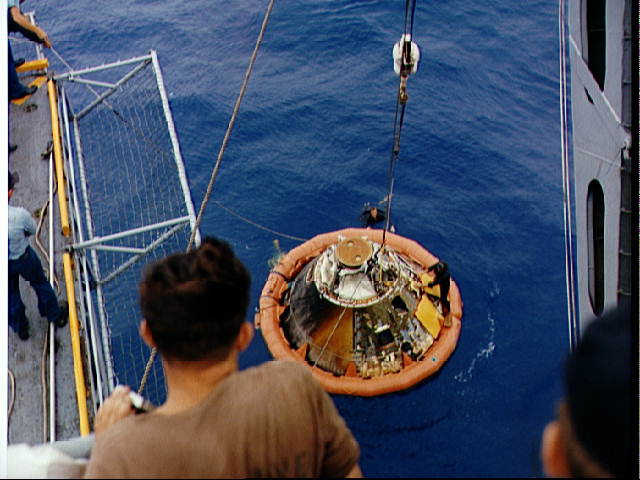 Apollo spacecraft 017 is prepared for hoisting aboard U.S.S. Bennington |
NASA Photo ID: S67-49420 File Name: 10074819.jpg Film Type: 35mm Date Taken: 11/09/67 Title: Apollo spacecraft 017 is prepared for hoisting aboard U.S.S. Bennington Description: The Apollo Spacecraft 017 Command Module, with flotation collar attached, is prepared for hoisting aboard the U.S.S. Bennington during recovery operations in the Mid-Pacific. A U.S. Navy frogman team assists in the operations. |
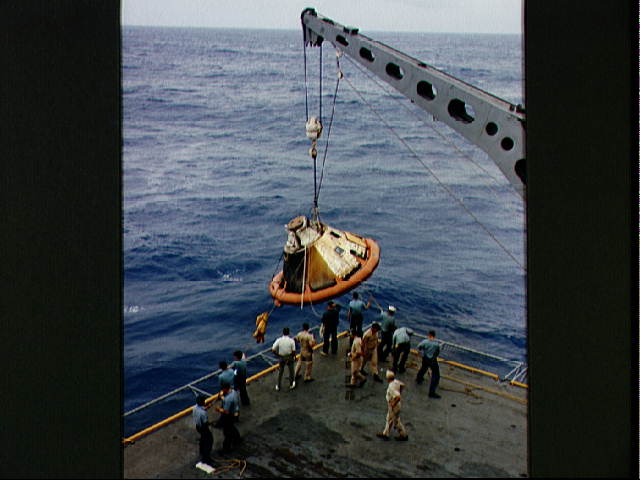 Apollo spacecraft 017 is hoisted aboard U.S.S. Bennington |
NASA Photo ID: S67-49423 File Name: 10074820.jpg Film Type: 35mm Date Taken: 11/09/67 Title: Apollo spacecraft 017 is hoisted aboard U.S.S. Bennington Description: The Apollo Spacecraft 017 Command Module, with flotation collar attached, is hoisted aboard the U.S.S. Bennington during recovery operations in the Mid-Pacific. |
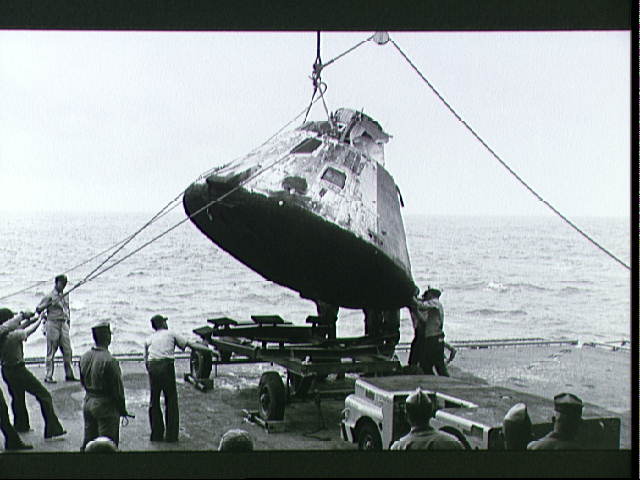 Apollo spacecraft 017 lowered on to deck of U.S.S. Bennington |
NASA Photo ID: S68-18503 File Name: 10074821.jpg Film Type: 35mm Date Taken: 01/25/68 Title: Apollo spacecraft 017 lowered on to deck of U.S.S. Bennington Description: The Apollo Spacecraft 017 Command Module is lowered onto a dolly on the deck of the U.S.S. Bennington, prime recovery ship for the Apollo 4 (Spacecraft 017/Saturn 501) unmanned, earth-orbital space mission. Note charred heat shield caused by extreme heat of reentry. |
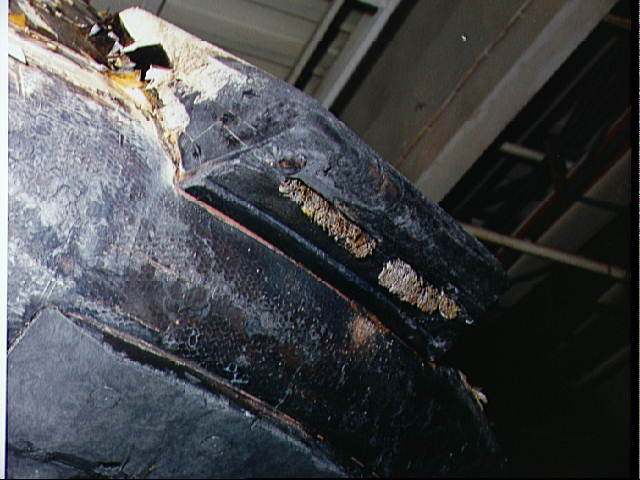 View of charred heat shield of Apollo Spacecraft 017 Command Module |
NASA Photo ID: S67-49447 File Name: 10074822.jpg Film Type: 35mm Date Taken: 11/09/67 Title: View of charred heat shield of Apollo Spacecraft 017 Command Module Description: Closeup view of the charred heat shield of the Apollo Spacecraft 017 Command Module aboard the U.S.S. Bennington. The damage was caused by the extreme heat of reentry. |
FOR MORE PHOTOS AND INFORMATION ON THIS EVENT
Click Image For Larger Image
Opens In A New Window
Close that window to return here
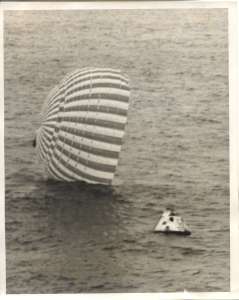 |
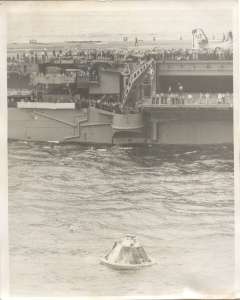 |
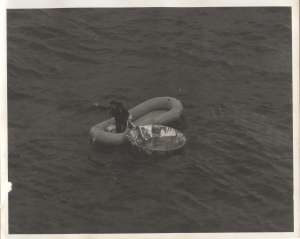 |
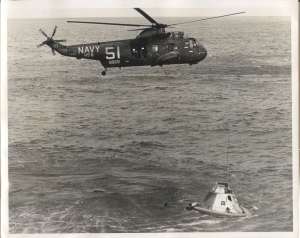 |
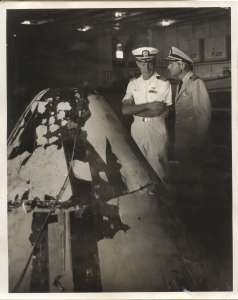 |
RETURN TO:
INTRODUCTION